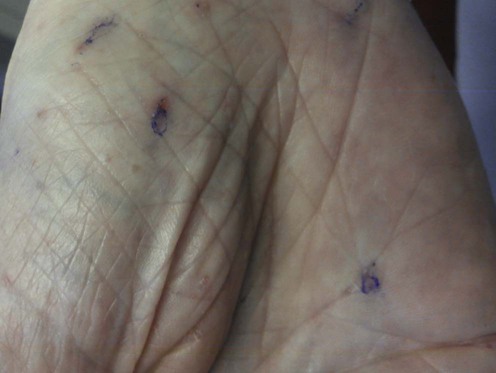Yoshizumi J and Harada T. Clin and Exp Dermatol 2009; 34: 711–14.
Scabies

Specific investigations
‘Wake sign’: an important clue for the diagnosis of scabies.
![]()
Stay updated, free articles. Join our Telegram channel

Full access? Get Clinical Tree



